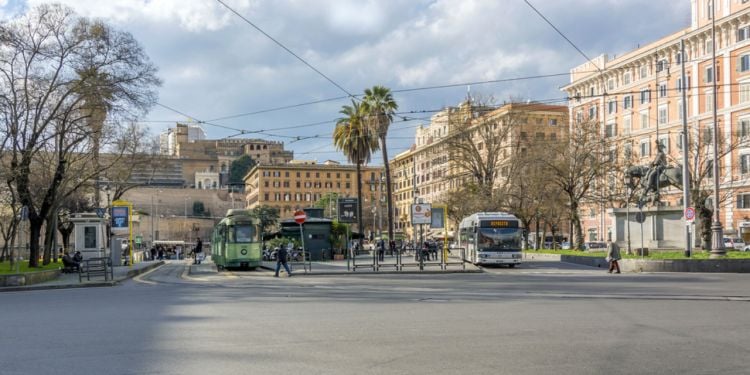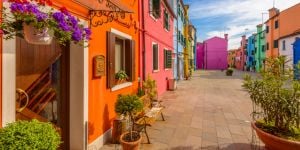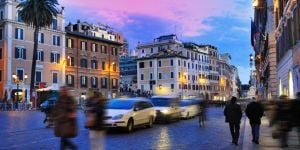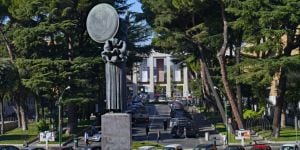
Rome is one of the largest cities in Europe, with 1,285 km² and 2,759,709 inhabitants, according to the 2021 ISTAT census, making it the most populous city in Italy. It is a popular destination for expatriates from all over the world due to its history, gastronomy and climate. Divided into 15 districts, municipi, which are, in turn, divided into sub-districts, rioni, Rome is a city that is sometimes difficult to understand and where some areas, depending on what you are looking for, may seem very far from the magnificent historical destination you have in mind.
Where to stay in Rome
If you want to move to Rome, the first thing to do is to study where to stay and which areas to visit rather than others. As in all big cities, the central areas are always the safest and also the best served by public transport in Rome: a detail that should be considered when looking for a place to settle down in. Above all, make sure to stay close to your workplace, school, university, etc., so that you don't have to spend many hours in transport.
Here are some rioni to consider when relocating to Rome:
- The historic center, central, dynamic but very touristy
- Prati, a residential, elegant and quiet area bordering the Vatican
- Monti, a district rich in culture and well-served by public transport
- Trastevere, a picturesque district rich in restaurants and bars
- Testaccio, an authentic neighborhood, a little less touristy with a great nightlife
- Parioli, a residential, elegant and green area north of the historic center
- Monteverde, a prestigious residential area like Parioli
- Aventino, one of the seven hills of Rome, today an elegant and very sought-after residential area
- San Lorenzo and Pigneto (especially for students), east of Termini station
- San Giovanni or Appio Latino, residential, a little more popular but of great cultural interest, which owes its name to the via Appia Antica
- Nomentano, residential but with a simpler lifestyle than Parioli, for example
- EUR, a modern and green district in the south of Rome
What are the areas to avoid in Rome?
As with any large city in Italy, Rome also has less well-frequented areas that are not recommended for expats. But overall, Rome is a safe city, especially in the more central areas. Walking alone or taking public transport during the day and at night is safe.
Micro-crime, theft, delinquency and drug trafficking are more common in the less central areas, in addition to poor management and less frequent public transport. Among these areas, there are:
- Esquilino (very close to Termini station)
- San Basilio
- Corviale
- Trullo
- Centocelle
- Torpignattara
- Torre Maura/Torre Angela
- Tor Bella Monaca
- Tor Sapienza
- Ponte di Nona.
There's also the areas around Termini, Ostiense and Tiburtina stations, especially at night.
Parking in the different areas of Rome
If you have a car, be patient. As in Milan, parking in Rome is not easy unless you have a private box or rent a garage. If you choose to park on the street, be aware that there are four types of parking spaces:
- White lines, which are free for a maximum of three hours (you will need to bring a time disc).
- Blue lines are paid for during the times indicated on the sign nearby (every day except Sundays and public holidays). These lines are free for residents who have applied for a vignette (Roma Mobilità Portal), electric cars and shared cars.
- The yellow lines are reserved for cars of people with reduced mobility, elected officials and delivery drivers.
- Pink lines are reserved for pregnant women and mothers traveling with children.
- White lines are scarce and often occupied, and it is not easy to find them. The cost of parking on the blue lines is about 1€ per hour outside the Limited Traffic Zone and 1.20€ inside it. White lines are free of charge in the evening until the next morning.
Traffic-controlled zones in Rome
Traffic and parking are not the only obstacles for motorists in Rome. There are also LTAs and pedestrian zones. TTZs are generally historical areas where traffic and parking are banned or limited in order to reduce pollution. Beware, if you enter a ZTL by mistake, expect to be ticketed.
The ZTLs to watch out for are the following:
- Fascia Verde di Roma
- Anello Ferroviario di Roma
- ZTL del Centro Storico di Roma
- ZTL Tridente
- ZTL Trastevere
- ZTL San Lorenzo
- ZTL Testaccio
If you are resident in one of these areas, you are, of course, entitled to drive and park in a ZTL, provided you apply for it beforehand.
Paid parking in Rome
Recently, several car parks have been built in the center of Rome and are open to everyone 24 hours a day to compensate for the lack of parking spaces in the city center. These include Villa Borghese (Saba), Mount Janiculum (Terminal Gianicolo or Terminal Vaticano) and Piazza Cavour, which are close to the main attractions and transport links. The price of parking per hour is around €2.40, although season tickets are available, for example, for a week at a rate of €60.
Alternatively, this type of parking is also available at metro stations A, at Furio Camillo and Anagnina, and B, at Laurentina.
It is also possible to take out a subscription to local car parks or to rent car boxes, which cost an average of €200 per month but vary according to the area in which you live.
Shopping areas and malls in Rome
If you are looking for a shopping area in Rome, Via del Corso and the streets adjacent to the Spanish Steps are the most central. You will also find shops in the famous Trident of luxury: via dei Condotti, via Borgognona and via Frattina. There is also via del Campo Marzio with nice elegant shops and many antique shops. From this street, you can easily reach via Margutta, via del Babuino and via di Ripetta, where you will find many clothes shops but also jewelers. In the Monti district, via Boschetto, there are trendy and alternative shops. If you live in the south of the capital and want to avoid the hustle and bustle of the center, go to via Marconi near piazza della Radio where there are many shops. The main shopping malls are Aura, Euroma 2, Roma Est, Porta di Roma and Parco Leonardo in Fiumicino. There are many shops of all kinds but also very large supermarkets.
Eating out in Rome
Like the rest of Italy, Rome is known for its excellent food and wine, which is appreciated worldwide. Romans love to gather with family and friends around a good table, even during the week. Areas such as the historic center, Testaccio and Monti are full of typical restaurants and trattorie where you can enjoy real traditional Italian food. However, it is advisable not to stay in places that are too touristy and to ask for advice from Romans and long-time expatriates with experience in Rome to be guided to the best authentic restaurants in the city. Also, look for small neighborhood restaurants near your home as the Romans do: they are usually very good and appropriate for the area they are in. This could be an excellent way to acclimatize to your new home.
Nightlife in Rome
If you like nightlife, the historic center has a few nightclubs and bars, but these are primarily touristy. If you're looking for a more authentic place, look for the areas of Ponte Milvio, Pigneto, Testaccio, Garbatella, Monti, Piazza Bologna or San Lorenzo. The latter two are especially popular with students because of the presence of La Sapienza University nearby, but there are also some very typical locali, as they say in Italian, where you can enjoy an aperitivo and chat with friends, whether you are a student or not.
Important:
The metro lines close at 11.30 pm on weekdays and at 1.30 am on Fridays and Saturdays. There are night buses that run between all the metro lines, but they are less frequent. You can use Uber or a traditional taxi if you don't want to take public transport home at night. For the latter, call 060609 or download the FreeNow or AppTaxi apps. There are also car-sharing and scooter-rental services in Rome.
Useful link:
We do our best to provide accurate and up to date information. However, if you have noticed any inaccuracies in this article, please let us know in the comments section below.












Comments